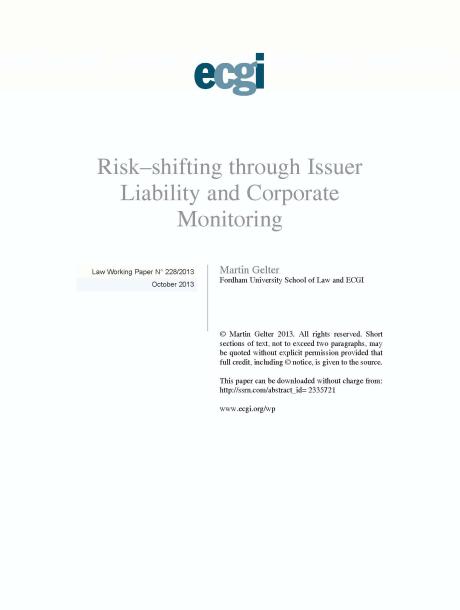
Risk-shifting through Issuer Liability and Corporate Monitoring
Abstract
This article explores how issuer liability reallocates fraud risk and how risk allocation may reduce the incidence of fraud. In the US, the apparent absence of individual liability of officeholders and insufficient monitoring by insurers undermines the potential deterrent effect of securities litigation. The underlying reasons why both mechanisms remain ineffective are collective action problems under the prevailing dispersed ownership structure, which eliminates the incentives to monitor set by issuer liability. This article suggests that issuer liability could potentially have a stronger deterrent effect when it shifts risk to individuals or entities holding a larger financial stake. Thus, it would enlist large shareholders in monitoring in much of Europe. The same riskshifting effect also has implications for the debate about the relationship between securities litigation and creditor interests. Creditors? claims should not be given precedence over claims of defrauded investors (e.g. because of the capital maintenance principle), since bearing some of the fraud risk will more strongly incentivize large creditors, such as banks to monitor the firm in jurisdictions where corporate debt is relatively concentrated.






